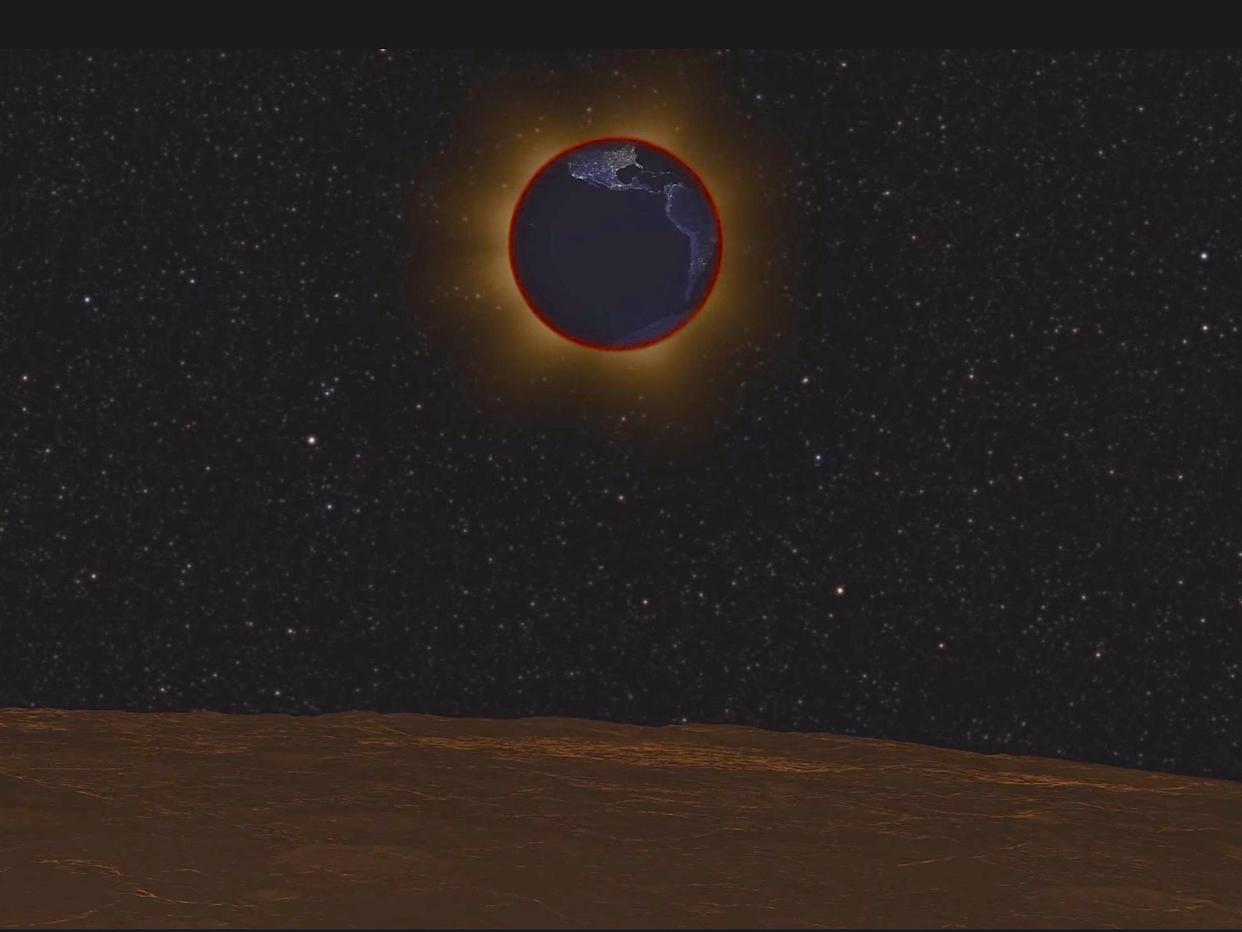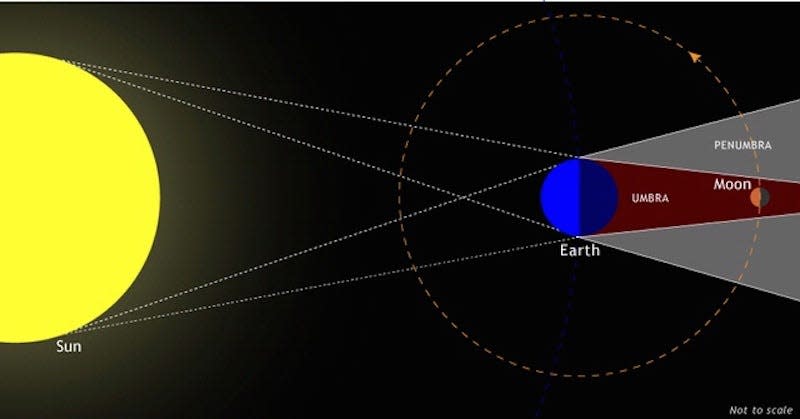A NASA video shows what this month's lunar eclipse will look like from the moon, and it's mind-blowing

There is only one cosmic phenomenon that could generate this seemingly red ring of fire around Earth:

Screen grab from Universe Odyssey on YouTube
The answer: A total lunar eclipse, like the one happening this month on Sept. 27. Read on to learn what this red ring really is and why it's important.
Thanks to this incredible animation by NASA's Scientific Visualization Studio, you can see what this month's total lunar eclipse will look like from a vantage point unlike any other: the moon.
If there were human colonies on the moon, this would be their version of a total solar eclipse. The difference is that instead of the moon eclipsing the sun, it's the Earth eclipsing the sun. Check it out on NASA's Scientific Visualization Studio or below:
Though you're standing on the moon in the animation above witnessing a solar eclipse, you can still pick out the different stages of the lunar eclipse that your fellow Earthlings will see.
During a total lunar eclipse, the moon passes completely through Earth's shadow, which has two parts: the penumbra and umbra, labeled below:

Screen grab from Universe Odyssey on YouTube Earth's umbra, which is Latin for "shadow," is the place in space where no light can reach. So, when the moon starts to pass through the umbra, it seems to disappear from view, like so:

Screen grab from Universe Odyssey on YouTube And if you're on the moon when this happens, you will be engulfed in shadow, like in the GIF below:

Screen grab from Universe Odyssey on YouTubeAs more of the moon enters Earth's umbra, however, people on Earth will see it reappear but instead of its regular white glow it will grow a deep, sometimes blood-like red hue. Below is a photo that Bill Young took of the blood moon — as it is sometimes called — during last October's lunar eclipse:

Screen grab from Universe Odyssey on YouTube The moon turns red because Earth's atmosphere is refracting, or bending the sun's light in the moon's direction. And because blue light scatters more than red light, it is the red light that reaches the moon's surface, reflects back, and enters our eyes.
If the Earth had no atmosphere, the moon would turn black instead of red during a total lunar eclipse.
A red ring of fire
But if you were standing on the moon at this time what would you see?
The Earth itself does not turn red. Instead you would see a red ring of fire encircle the Earth. This is the atmosphere's light-bending in action.
What's more, this red ring is every single sunset and sunrise on Earth — at that moment — in one breath-taking shot because it's the light from the sun that's passing just below and above Earth's horizons, as it does during a sunset and sunrise (note how the lunar surface isn't black but red from the refracted sunlight):

Screen grab from Universe Odyssey on YouTube The same time that a Lunarian (moon-person) saw a total eclipse of the sun, Earthlings would see a total eclipse of the moon.
But there is one important difference for Lunarians: As long as you're on the Earth-facing side of the moon, you will see the total solar eclipse no matter where you're standing.
Anyone who enjoys solar eclipses on Earth, knows that this is not the case for Earthlings. That's because, during a solar eclipse on Earth, the moon's much smaller shadow only casts over a tiny portion of Earth, which is why it's an extremely rare treat to witness a total eclipse of the sun even once in a lifetime.
Stay tuned for more details on how to watch this month's total lunar eclipse.
NOW WATCH: New aerial footage shows aftermath of explosion in China
See Also:
UP NEXT: 900 million Wi-Fi networks are revealed in this dazzling map of electronic life around the world
